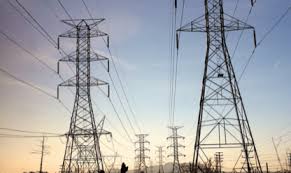
Reducing electricity losses saves Iran €240m in a year

The mentioned saved amount has been allocated to the construction of new power plants throughout the country.
Through different measures taken by the Energy Ministry, the national grid experienced a single-digit figure (9.76 percent) of electricity losses in the past year, which was unprecedented.
The seven-percent annual decline also economized on 500 million cubic meters of gas consumption in the power plants and prevented from the emission of one million tons of carbon dioxide.
Electricity losses in Iran’s power grid are currently lower than that of many countries like Brazil, Turkey, Mexico, Hungary, Croatia, India, and Pakistan.
The country is seriously determined to reduce the losses more in the current and next years.
Last month, an official with Iran’s Power Generation and Distribution Company (known as TAVANIR) announced that Energy Ministry managed to save 3,876 megawatts (MW) of electricity in the previous calendar year by implementing consumption management programs.
Mostafa Rajabi Mashhadi said cooperation with the various sectors resulted in reducing the consumption by 3,876 MW which is equal to the output of five 1000MW-capacity power plants.
According to the official, Energy Ministry signed memorandums of understanding with 135,000 industrial, agricultural, and domestic subscribers under the framework of consumption management programs, last year, to pass the summer consumption peak without outages.
Back in January, Tavanir head had said that Energy Ministry managed to prevent the consumption of 70 trillion rials (about $1.66 billion) worth of electricity during the summer peak period by implementing consumption management programs.
“Implementation of this program allowed us to pass the summer without any power outages,” the official said in a meeting of directors of the Energy Ministry subsidiaries’ public relations departments.
He noted that Iran’s electricity network has 100 percent coverage across the country, adding that this is an indication of the Iranian electricity industry’s leadership in the region and the world.
In the past decade, constant temperature rising and the significant decrease of rainfalls across Iran have put the country in a hard situation regarding electricity supply during peak consumption periods.
In this regard, the Energy Ministry has been following new strategies in recent years to manage the consumption and lessen the electricity losses in the national grid.


Trump weighs using $2 billion in CHIPS Act funding for critical minerals

Codelco cuts 2025 copper forecast after El Teniente mine collapse

Electra converts debt, launches $30M raise to jumpstart stalled cobalt refinery

Barrick’s Reko Diq in line for $410M ADB backing

Abcourt readies Sleeping Giant mill to pour first gold since 2014

Nevada army depot to serve as base for first US strategic minerals stockpile

SQM boosts lithium supply plans as prices flick higher

Viridis unveils 200Mt initial reserve for Brazil rare earth project

Tailings could meet much of US critical mineral demand – study

Kyrgyzstan kicks off underground gold mining at Kumtor

Kyrgyzstan kicks off underground gold mining at Kumtor

KoBold Metals granted lithium exploration rights in Congo

Freeport Indonesia to wrap up Gresik plant repairs by early September

Energy Fuels soars on Vulcan Elements partnership

Northern Dynasty sticks to proposal in battle to lift Pebble mine veto

Giustra-backed mining firm teams up with informal miners in Colombia

Critical Metals signs agreement to supply rare earth to US government-funded facility

China extends rare earth controls to imported material

Galan Lithium proceeds with $13M financing for Argentina project

Kyrgyzstan kicks off underground gold mining at Kumtor

Freeport Indonesia to wrap up Gresik plant repairs by early September

Energy Fuels soars on Vulcan Elements partnership

Northern Dynasty sticks to proposal in battle to lift Pebble mine veto

Giustra-backed mining firm teams up with informal miners in Colombia

Critical Metals signs agreement to supply rare earth to US government-funded facility

China extends rare earth controls to imported material

Galan Lithium proceeds with $13M financing for Argentina project

Silver price touches $39 as market weighs rate cut outlook

















